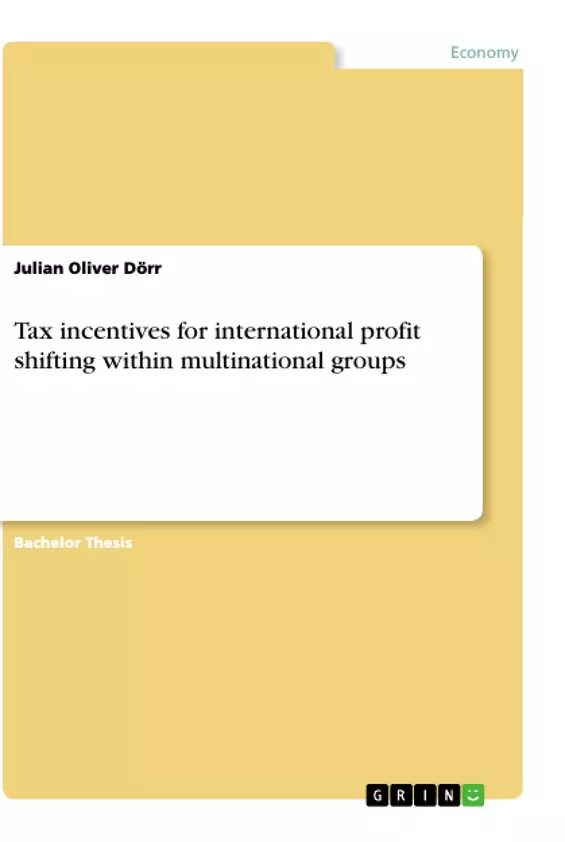This paper aims at estimating the magnitude of such tax avoidance strategies by the means of international profit shifting. While income shifting of multinational firms is a hotly debated issue among policymakers, this study indeed finds empirical evidence that multinationals respond to international tax differences. On average, it finds a semi-elasticity of -1.25 of firm profits with respect to a country's corporate tax rate.
In recent years, globalization and increasing mobility have brought nations closer together but have also encouraged them to compete internationally over tax bases as source of government revenue. Both innovations in financial instruments and the free flow of capital across borders have facilitated tax avoidance measures of multinational operations.
Inhaltsverzeichnis (Table of Contents)
- 1 Introduction
- 2 The model
- 3 Data
- 3.1 Country-level data
- 3.2 Firm-level data
- 4 Empirical Analysis
- 4.1 Basic results
- 4.2 Robustness checks
- 4.3 Endogeneity
- 4.4 Country-specific elasticities
- 5 Summary
Zielsetzung und Themenschwerpunkte (Objectives and Key Themes)
This paper aims to estimate the extent of tax avoidance strategies through international profit shifting by multinational companies. It examines how these companies respond to international tax differences and investigates the impact of such strategies on welfare.
- Profit shifting as a tax avoidance strategy
- The impact of corporate tax rates on multinational profits
- The role of infrastructure quality in profit shifting decisions
- The consequences of profit shifting for national tax revenues and economic welfare
- The effectiveness of OECD measures to combat base erosion and profit shifting (BEPS)
Zusammenfassung der Kapitel (Chapter Summaries)
- Chapter 1: Introduction This chapter sets the scene by discussing the rise of international profit shifting and its implications for national tax systems. It highlights the motivations behind profit shifting, such as tax differentials between countries, and its various forms, including debt shifting, intellectual property relocation, and transfer pricing manipulation. The chapter also reviews existing literature on profit shifting and outlines the objectives and scope of the paper.
- Chapter 2: The model This chapter presents the theoretical framework for analyzing profit shifting, based on Huizinga and Laeven's model. The model incorporates a multinational firm with multiple affiliates in different countries, taking into account the costs associated with profit shifting, such as administrative expenses and potential penalties.
- Chapter 3: Data This chapter describes the data sources used in the empirical analysis. It covers both country-level data, such as corporate tax rates and infrastructure quality, and firm-level data, including financial statements and information on intra-firm trade.
- Chapter 4: Empirical Analysis This chapter presents the empirical results of the study. It focuses on analyzing the relationship between corporate tax rates and profit shifting, using regression techniques to estimate the semi-elasticity of profits with respect to tax rates. The chapter also addresses potential endogeneity issues and explores country-specific elasticity estimates.
Schlüsselwörter (Keywords)
The main keywords and focus topics of this paper include profit shifting, international tax avoidance, corporate tax rates, multinational corporations, base erosion and profit shifting (BEPS), transfer pricing, OECD, infrastructure quality, and empirical analysis.
- Quote paper
- Julian Oliver Dörr (Author), 2016, Tax incentives for international profit shifting within multinational groups, Munich, GRIN Verlag, https://www.grin.com/document/994325



